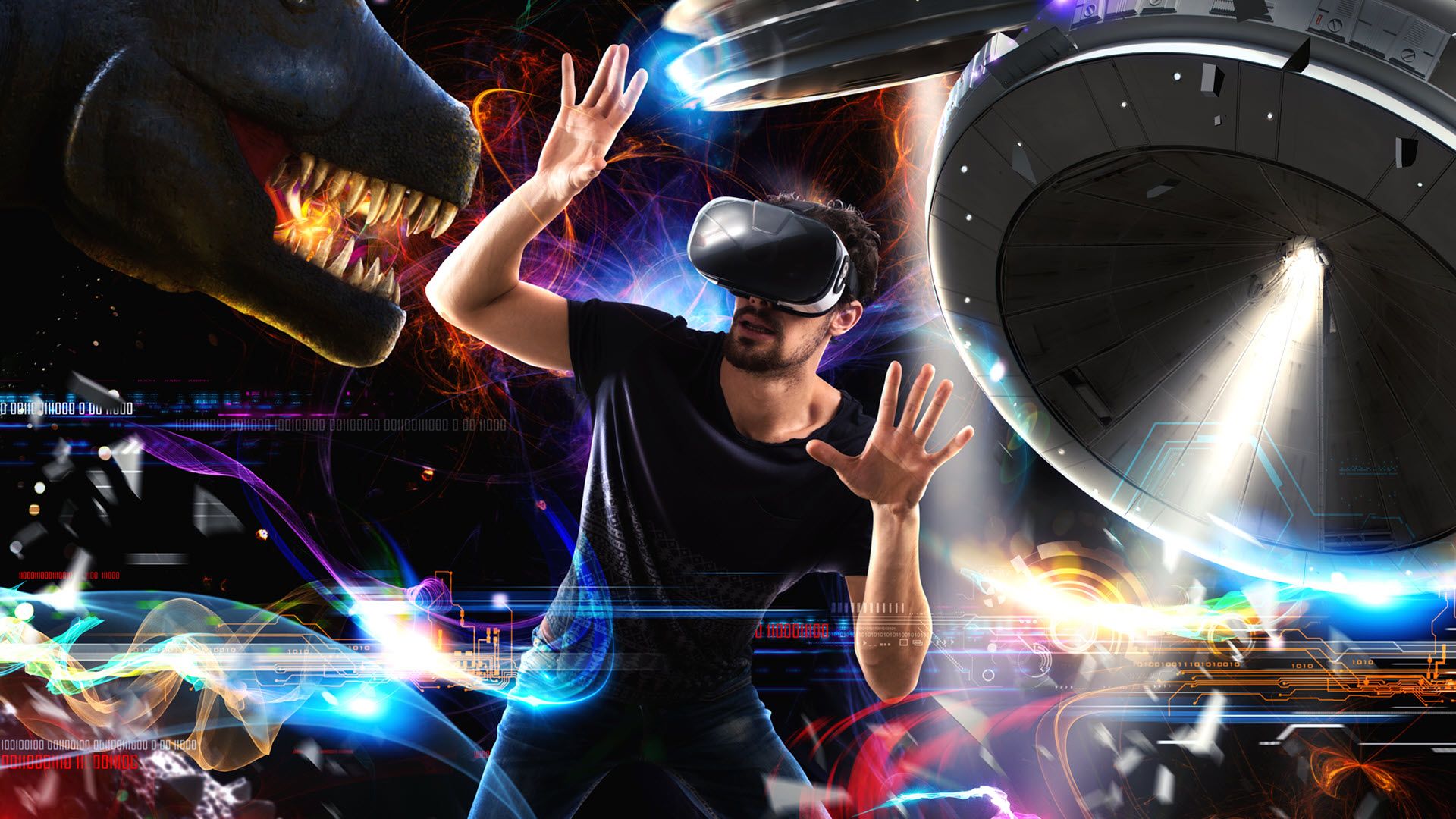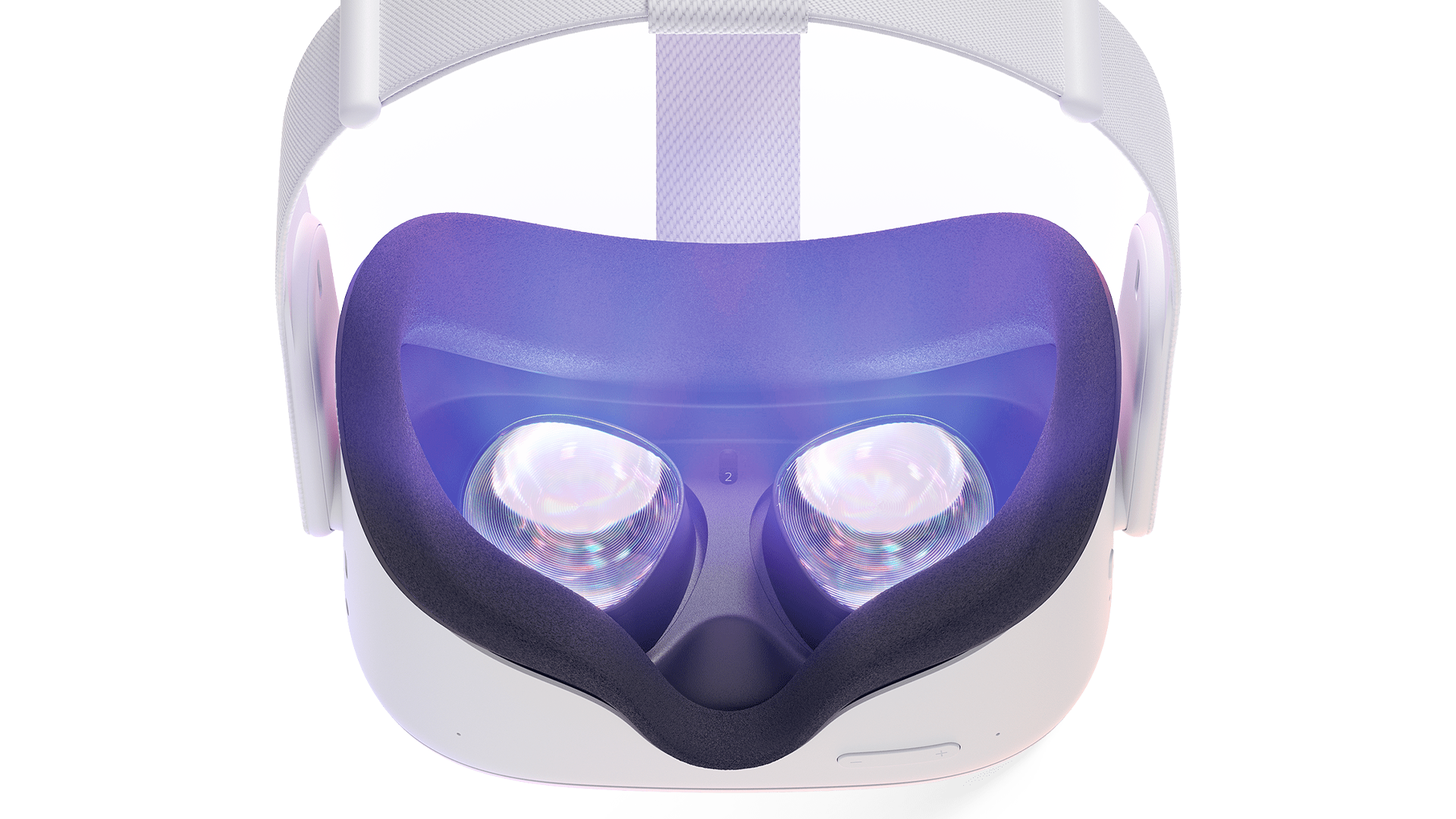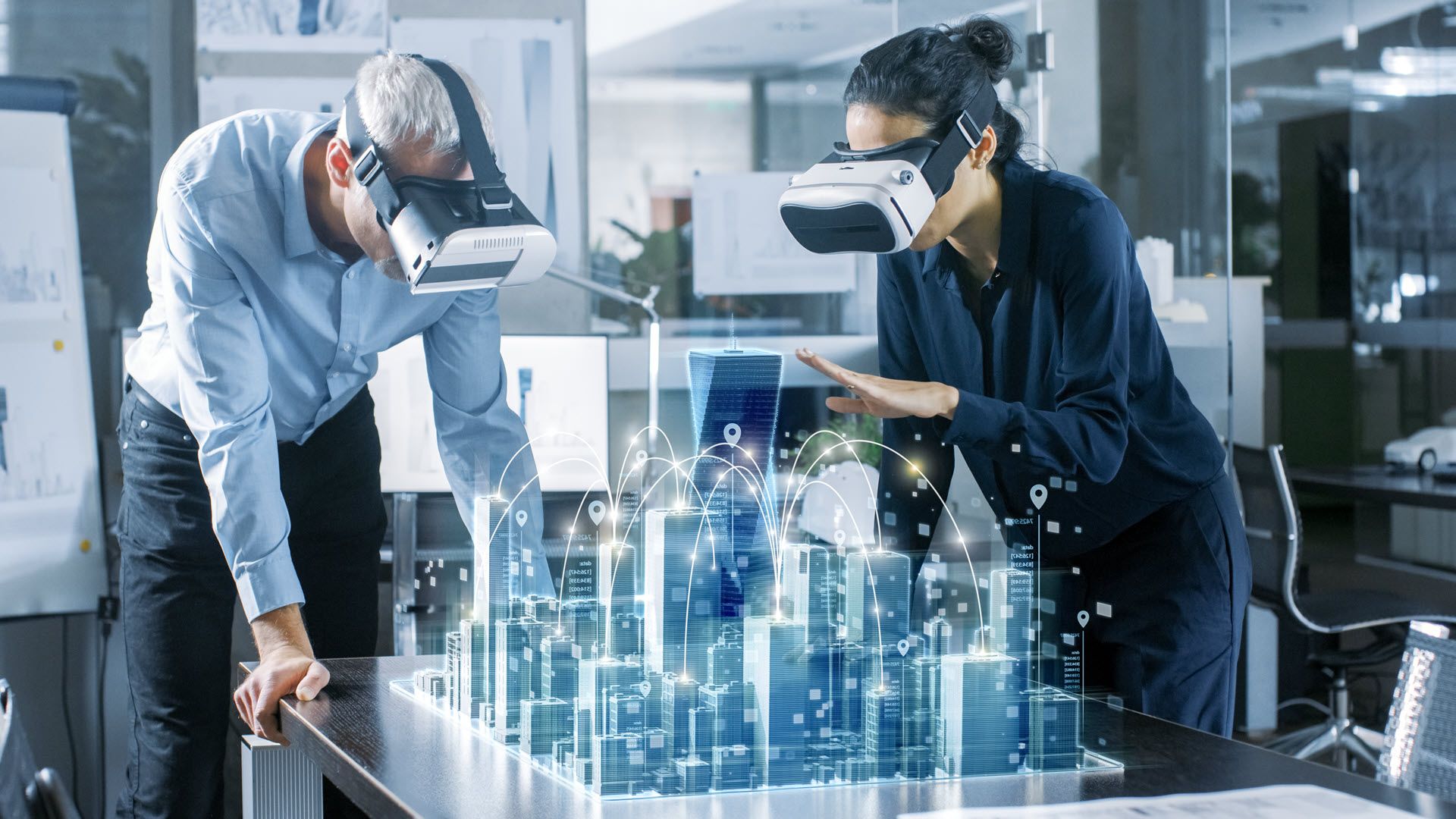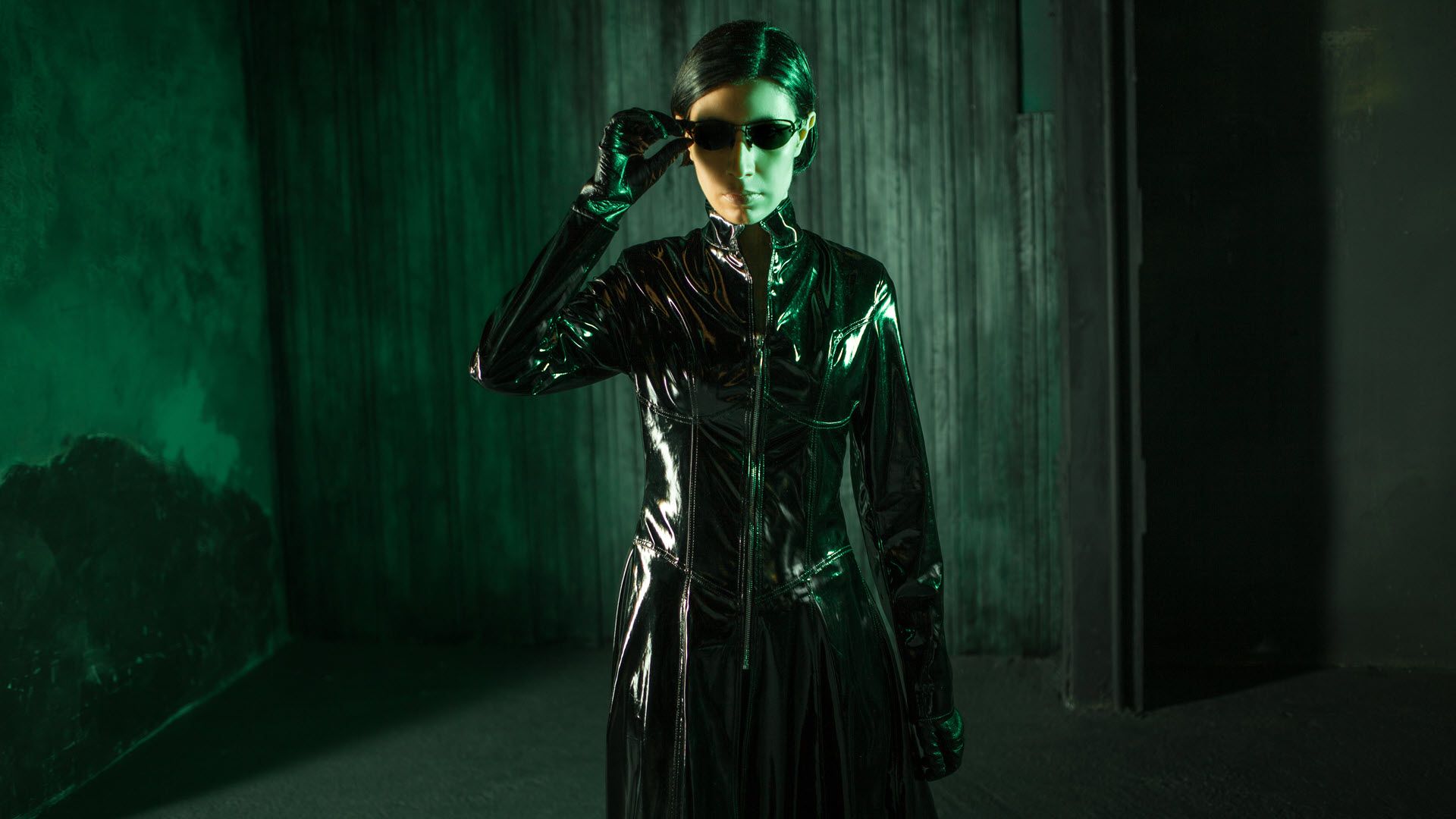Quick Links
If you need any further proof we live in the future, just look at Virtual Reality (VR). After several attempts, it's actually becoming the gateway into a new universe we were always promised. So, let's take a look at why this current VR generation is actually living up to the hype.
Previously, VR formed the backbone of movies like The Matrix and Total Recall and provided a space-saving entertainment option for more affluent sims. However, in reality, it always fell a bit flat. Instead of the spy-themed holidays on Mars you got with Total Recall, we were instead treated to a weird table-mounted effort by Nintendo.
But things have changed, technology has advanced, and it's all very different this time around. As actual reality has crumbled slightly over the last couple of years, VR has experienced an unprecedented surge. Headset sales are through the roof, with some models hitting figures that took years in mere months. New uses are being found, some of which are replacing real-world functions that stopped during the pandemic---and major companies are taking note. The most popular headsets even look like the ones your sims have been ducking and diving in for years.
The strong future of VR comes down to a variety of factors, like better accessibility, better games, deeper immersion, uses outside of gaming, and backing from major players.
It's Actually Accessible
It really isn't that difficult or expensive to get into VR.
You can get an Oculus Quest 2 for around $300. It's a very accessible price point and a lot cheaper than most games consoles, never mind the migraine TVs we mentioned earlier. The Quest 2 is both an improvement on its predecessor and was $100 cheaper at launch. It can function as a stand-alone headset with a wide range of games available. You don't need to own a gaming PC, which helps reduce the cost to get started.
All you need in addition to the Quest is somewhere to play. You can, of course, play some games while stationary or sitting down---but the full experience does require at least six feet of clear playroom in both directions. Just don't try taking it outside because while there is a lot of room outdoors, the sun may damage the headset.
If you want to spend a bit more money, you can also expand the range of available games with a capable PC and a USB C cable or your WiFi connection. Players with an original Quest will need an app called "Virtual Desktop" if they want to remain wireless while playing PC VR. However, original Quest users will join Quest 2 users in using Facebook's official Air Link soon. That will allow you access to PC-based VR games like Half-Life: Alyx and Medal of Honor: Above and Beyond.
You can even get VR versions of established PC games. Official ports, like Skyrim VR and Fallout 4 VR, work pretty well. Software is even available to port non-VR games into the virtual world, though results may vary. Players can also play regular games in VR on a massive virtual screen.
We've Upgraded from the Demo
Part of the reason VR felt gimmicky and wasn't really taken seriously was the content on offer. The games felt like tech demos, and most basically were. Graphics were horrible, levels were limited, and most just involved the user standing there and looking around as the VR world did its thing. This is amusing the first few times you do it, fun to show your friends, but that's basically it.
Now though, there are actual games, with full plots, and slick gameplay elements. Half-Life: Alyx is an outstanding achievement. It has better graphics than any VR game released before it; more gameplay elements, including the kind of physics puzzles the Half-Life series is known for, and a full storyline.
Another long established games series with a VR option is Hitman. Players can now creep around the various stages of Hitman III and garrote people with their own two hands. Provided their hands are actually Playstation Move controllers.
You can even crack out the bad Christian Bale impressions and say "I'm Batman" while playing as Batman in Arkham VR. Arkham is less action and more detective work as you complete a series of puzzles and try to work out what happened to your dead sidekick. Because VR isn't just about punching pixels in the mouth. Despite the lack of "action," the game does have the occasional jump scare, which is more effective in VR than you want it to be. If you think something suddenly popping up on a TV screen is bad, try having a mutant crocodile-man pop up half an inch from your actual face.
Best of all, when you get your headset out at a party, it doesn't have to be a gimmick. A group of people can play actual, fun, multiplayer games instead of just lining up and taking it in turns to look at a low-res, lifesize, 3D Stegosaurus. And, it really is fun for all the family.
If you want to get physical, Acron: Attack of the Squirrels! involves one person donning a headset, becoming a tree, and protecting their "acorns" from up to eight "squirrels" playing from their smartphones. Obviously, the bigger the group, the harder it is for the tree: One enemy won't be hard to deal with, but more than four will involve a lot of twisting and flailing on the "tree's" part.
Puppet Fever is a bit more sedate and a nice middle ground. The person in the headset is in the backstage area of a puppet theater. They then have to use various puppets and props to describe movies, events, and scenarios charades style---while the other players try to guess the subject. Once again, the players not in the headset simply use their phones to join in the fun.
No smartphones? No problem. Keep Talking and Nobody Explodes doesn't need them! Once again, a single-player gets the headset and is given a bomb to diffuse. It's their job to describe the features of said bomb to their teammate, who has a printout or a PDF of the bomb disposal manual. The teammate tries to determine which bomb it is and what steps diffuse it based on the description. The bomb has a timer, and any mistakes will either make that timer tick faster or make the bomb explode. This will, of course, lead to the sort of petty, heated arguments that are the cornerstone of any games night.
The Tech Hasn't Peaked, but the Immersion It Offers May Have
Immersion has always been an important aspect of video games, and it comes in levels. Something as basic as 1972's Pong can be immersive---you can be focused so hard on the game everything else disappears. But that's the base level, you don't actually believe you're playing tennis.
Then at the other end of the scale, you have things like RPGs (Role Playing Games). You start living that character while you're playing the game. Maybe riffing off embarrassing one-liners to your screen and hopefully absolutely no one else for your sake and theirs. Your mind is doing a lot of work, the game designers did a lot of work to get you there, and it paid off. This is peak immersion! Or it was anyway.
While your mind is filling in the blanks to help immerse you in traditional video games, it may actually switch off completely in VR. I played one of those games that are essentially a tech demo on the Quest last year, and I slipped into that world without knowing it. Next thing you know, I'm crouched behind a "wall," the pistol I'm using runs out of ammo, and an enemy flanks me. I throw my gun to the side, spring up, and throw myself at the enemy, hoping to put a right hook across his jaw before he puts a bullet in me.
What actually happened in the real world is: I ended up so immersed that I actually forgot I was supposed to use the stick on my left controller to move. I launched forwards, tripped over an end table, punched my bedroom wall, and landed on my very confused wife. Turns out if you get injured in VR, you do actually get injured in real life, too.
It's not a one-off either. Boneworks is a Half Life-esque game that really pushes the limits of combat. Its physics, gunplay, and melee are all probably as polished as you can get with current VR technology ---which does come with an unexpected downside.
There was a moment early on in that game where I was on my hands and knees, beating an enemy to death with a virtual house brick when a sliver of clarity broke through, and I wondered if I was going insane. The sewer levels in Boneworks were also incredibly unnerving. VR lends itself well to horror games and situations as you're actually experiencing the sights and sounds.
It's possible to immerse yourself in very specific situations, too. If Sci-Fi is your thing, like really your thing, as in you've spent more hours than you can count pretending you were Han Solo or Captain Kirk, you'll be pleased to know that you now sort of can be. Star Wars: Vader Immortal
and Star Trek: Bridge Crew both give fans a chance to live out some of their fantasies.
Vader Immortal has a winding, three-episode story that sees you play a smuggler who has been captured by the Sith Lord and tasked with recovering an ancient artifact. You discover your dormant force powers and eventually get to swing a lightsaber around. And it controls just like a real lightsaber! It's totally weightless aside from the handle you're grasping. Amazing! There's also a lightsaber dojo mode available for those who want to dispense with the plot and just play with their laser sword.
Bridge Crew has players adopting one of four roles: captain, tactical officer, engineer, or helm officer. All four of these roles can be filled by you and your friends. If your friends aren't riding the VR wave yet, you can look for new friends online---or just play as the captain and bark commands at the NPCs who are filling the gaps. Each role has unique duties, and talking in a Scottish accent is in no way mandatory. However, you are, of course, free to if you really want to take it all that far. If everyone does their job, you'll save the Vulcan species. If you mess up, you'll all be killed by Klingons. The stakes have never been higher.
Personally, I never got that deep into Sci-Fi, but I did like sports. A boxing simulator like Thrill of the Fight will involve me flicking a few jabs at an opponent while audibly taunting them before busting out an Ali shuffle. I probably look like a complete nugget to anyone wandering in the place, but inside those goggles, I genuinely feel like Roy Jones Jr.
There Are Uses Beyond Gaming
Alongside the mental benefits of feeling like Roy Jones Jr. come some physical perks. Thrill of the Fight is essentially shadowboxing, which is a really good workout. If you can go hard for six rounds on Thrill of the Fight, you're probably in decent shape. If you can go 12, you definitely are.
Beat Saber, another popular VR game, can burn over seven calories a minute. You don't know you're burning those calories because you're too busy smacking boxes with lightsabers to the rhythm of whatever song you've picked.
If you want something more relaxed, meditation and Tai Chi apps are also available. It may not replace a gym membership entirely, but it burns more calories than sitting on the couch with an Xbox controller.
The wider business world is also seeing the benefits of VR. Architects, in particular, seem to find VR very useful. It allows their design teams to create 1:1 scale demonstration models (cheaply) to show their clients. What would be a sketch, or at best a small model on a board room table, is now something prospective clients can wander around in.
The possibilities are immense, well beyond gaming. My aging mother would get absolutely destroyed playing cartoonish Spartacus simulator Gorn. She's in her 60s and is in no way equipped for ultra-violent gladiatorial combat. However, load up Netflix in VR and pop on her headset, then boom! She's relaxing in a ski lodge she could never afford, watching something on what looks like a bigger TV than she could ever hope to own. Add a decent pair of noise-canceling headphones, and you, too, can slip away from the hell that is the real world, if only for a few hours.
The coronavirus pandemic has also led to VR meetings, which aren't as popular as Zoom but are an option wacky enough to exist in the business world. Microsoft even held the keynote address of this year's Ignite conference in the virtual world. If you miss movie night with your friends and family, you can actually watch all manner of things together virtually now, too.
VR could actually become your office. Virtual Desktop isn't just another way to get your Quest playing PC VR games wirelessly. You can use Virtual Desktop to do anything you would normally do on your computer. So, why use it instead of just using your regular setup? Well, the app itself is significantly cheaper than a massive, customizable monitor would be---plus, if you don't have a dual monitor set up, you can have one in the virtual world and instantly realize how much easier it makes most tasks in both dimensions. You can also customize your backdrop, which is nice if you're bored of your workspace and want to switch to a forest, mountain, or a dojo.
The VR workspace is another area where technology has reached the point where it's actually useful and not just a concept. A few things still fall into the concept category, like Facebook's attempts at getting your real keyboard into the virtual world, but those just paint a clear picture of where the virtual office is headed in the near future.
It Has Some Major Backing
Sony, HP, HTC, Microsoft, Google, Facebook, and Valve, are just some of the major names currently active in VR---while Apple is apparently getting ready to enter the game.
These companies are not infallible, and if they're wrong, VR might go down as one of the costliest flops in global history. But that level of faith, from major organizations, must make you think there's not only something there, but it's something worth throwing extensive resources at.
Promisingly, they all seem to be looking at different areas, too. Microsoft and Google are doing a lot of work with software and augmented reality; Facebook and Sony are producing cheap, easy to use, headsets; HP has taken the middle ground with its $600 reverb system; HTC and Valve are at the premium end of the mainstream market.
Valve and Microsoft have strong gaming backgrounds, though Microsoft also seems to be looking at the business applications of both VR and Augmented Reality.
On top of that, numerous smaller companies are filling almost every niche available. Some work on accessories for mainstream headsets, some develop ultra-high-end headsets, others ignore headsets altogether and develop other products that will enhance your VR experience.
We Know Where It's Going
While 3D may have reinvented itself slightly a few times, those red/blue cardboard glasses made way for less cool-looking black plastic sunglasses, for example---but the concept remained the same. There's a flat screen and some eyewear that will con your brain into thinking it is staring at a window. There isn't really anywhere else you can logically go. There were some experiments with "4D" cinemas that added realistic "rain" and "wind" to the viewing experience---but surprisingly, soaking your audience and then blasting it with cold air doesn't always improve an evening out.
On the other hand, VR clearly knows where it needs to go and has a game plan to get there. The issues with the system: VR sickness, the "screen door" effect, comfort, etc., are all clearly solvable. The first two require a headset with a high frame rate that can display things in 16K. An 8K headset raised over 20x its target on Kickstarter and is in development, while Apple allegedly has a headset in development that will go all the way.
Comfort and weight are two obvious issues with the current generation of VR headsets. A lot of the weight is related to the necessary optics, as opposed to the electrical components. Still, Facebook is looking into holographic optics, so we may actually see VR sunglasses at some point. For now, things like a battery acting as a counterweight have made current-generation headsets more comfortable---so other options are available.
Controllers are constantly improving; the Valve Index allows finger tracking and the ever accessible Quest and Quest 2 can be controlled with your hands alone. The Quest's hand tracking isn't perfect yet, but it is functional and has potential.
Additional trackers are also already here, though they are pricey, only work with limited games, and can be fiddly to set up. As bad as they were, the Microsoft Kinect and Playstation Eye demonstrated you can track a person's body movements with a camera alone, so hopefully, a more comfortable full body tracking option will be available in the future.
The concepts, backing, and customer base VR needs to move forward are all in place. Progress is almost guaranteed with the way forward clear and tech giants like Facebook and Microsoft pushing things on.
But never mind the future, VR is very good right now. The games are playable and immersive, businesses are finding new uses for it every day, and you can comfortably work inside VR for a couple of hours if you get bored of your home office.
What we have to look forward to is lighter headsets, better graphics, and augmented reality blurring the lines between the real and virtual worlds. If things continue the way they are, people could be plugging into The Matrix a bit sooner than they think.







